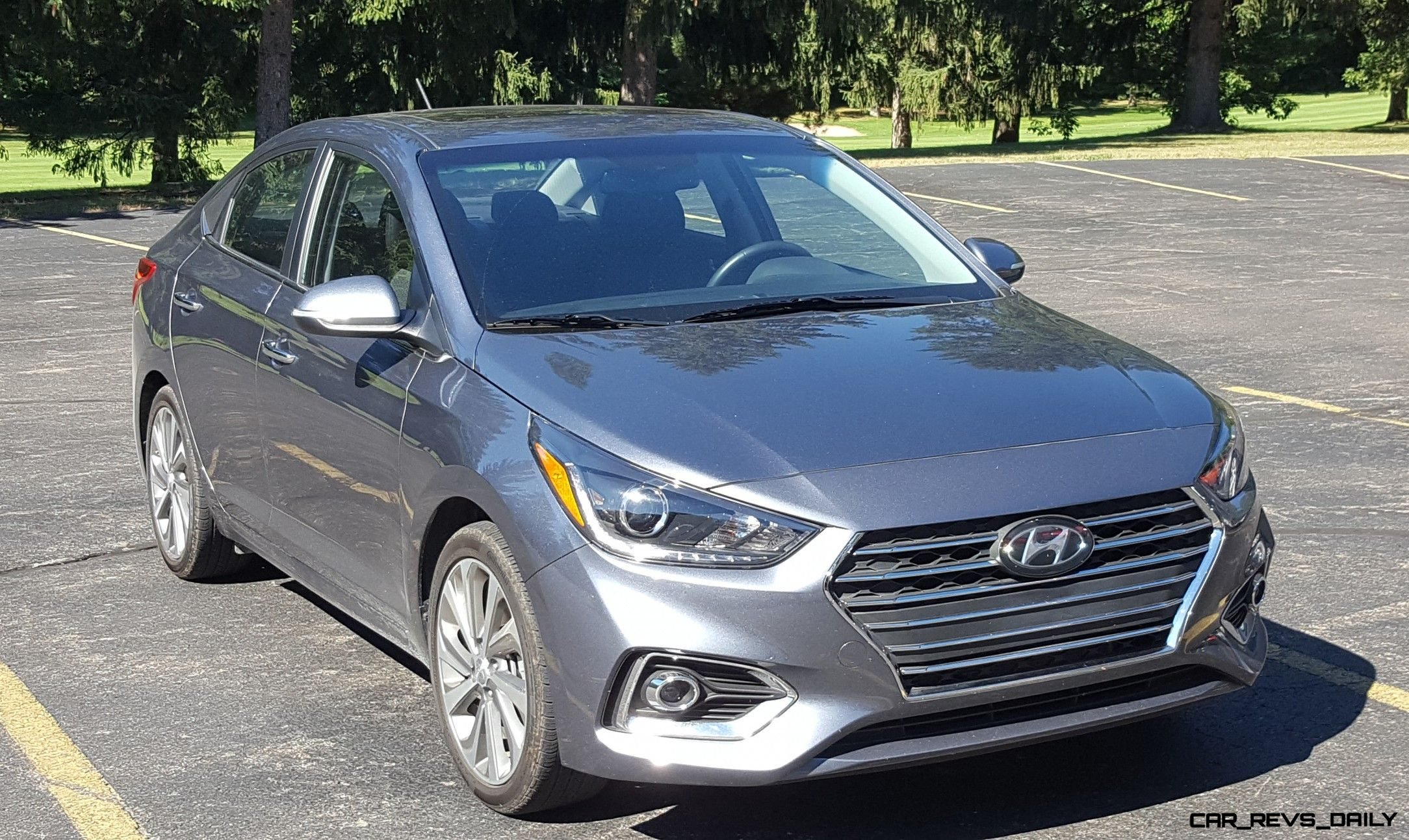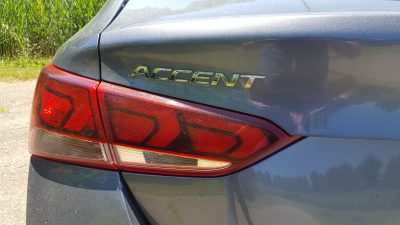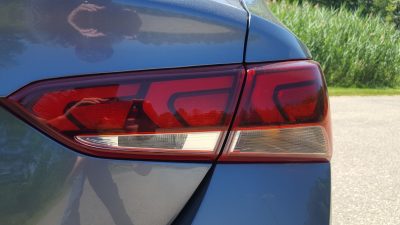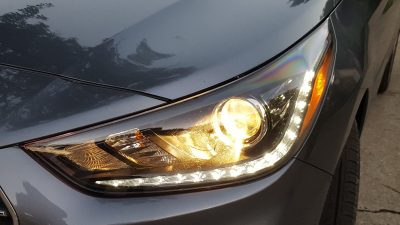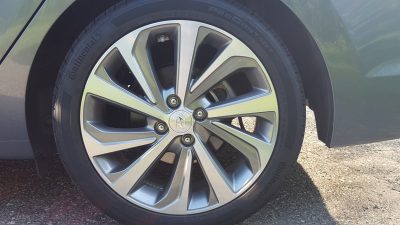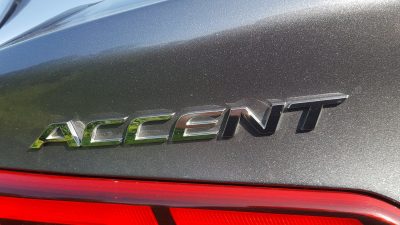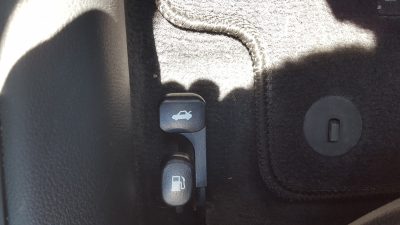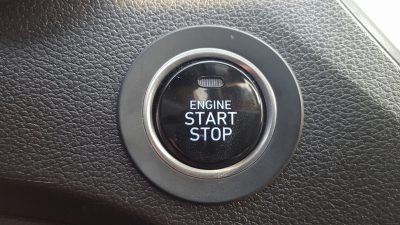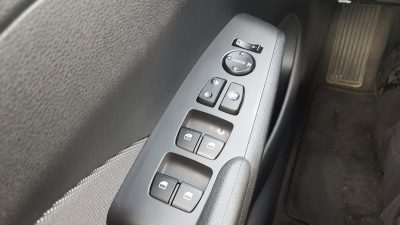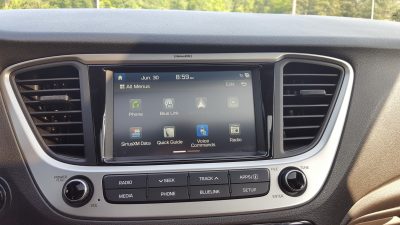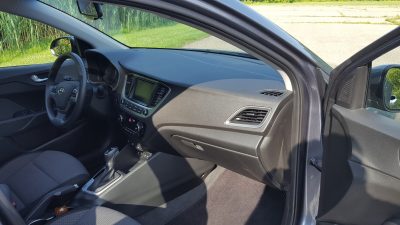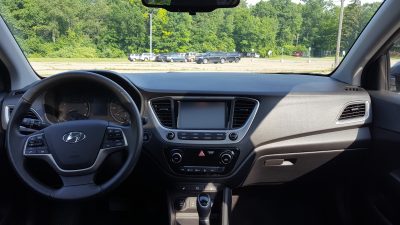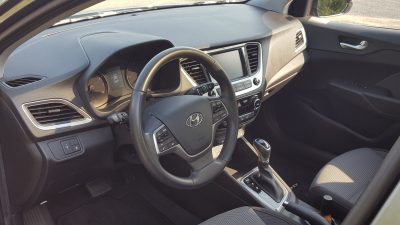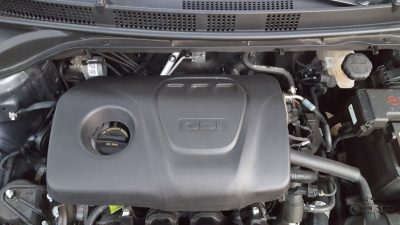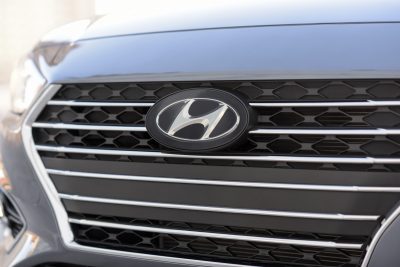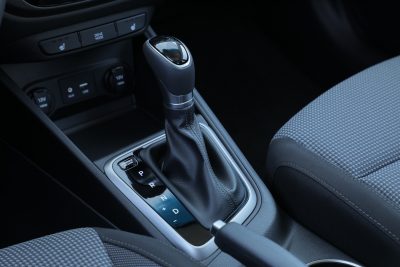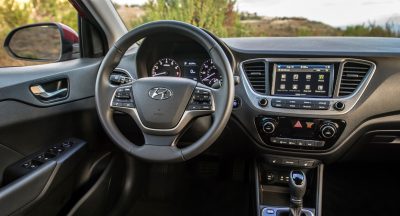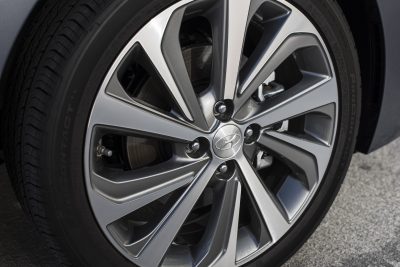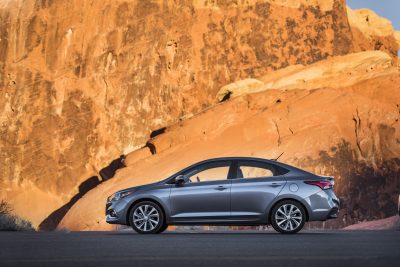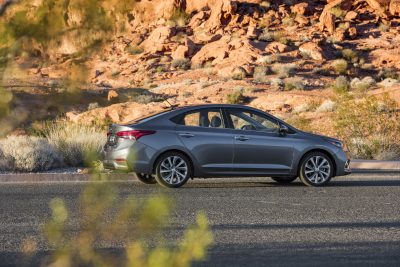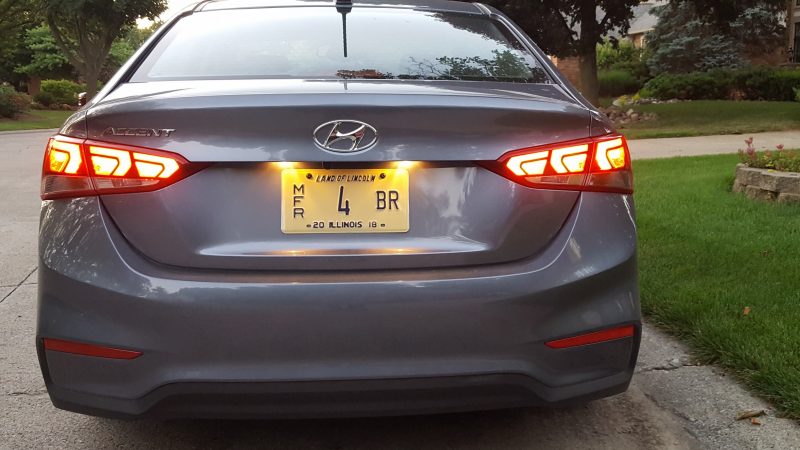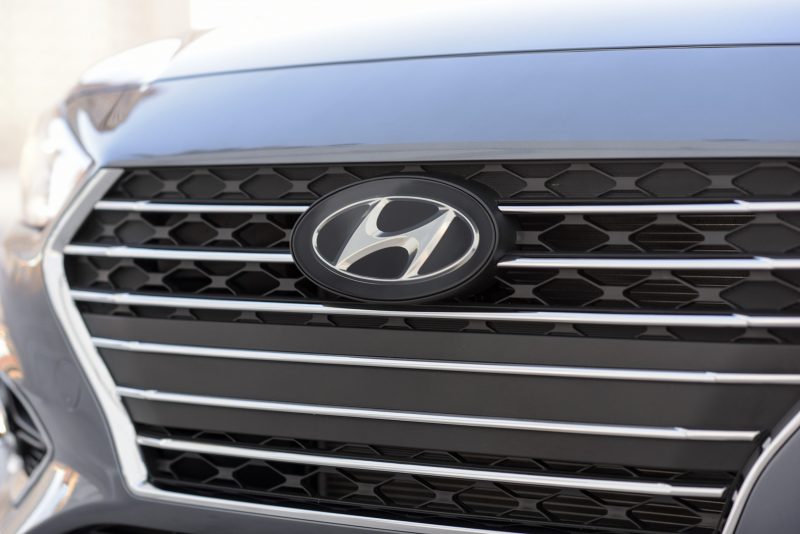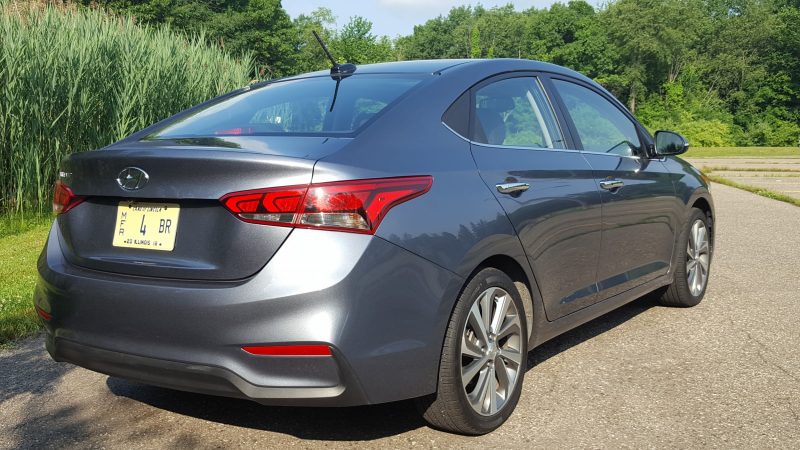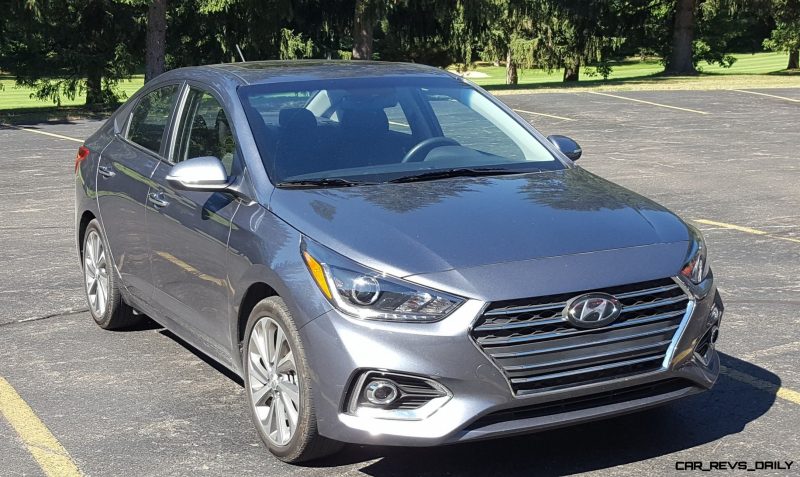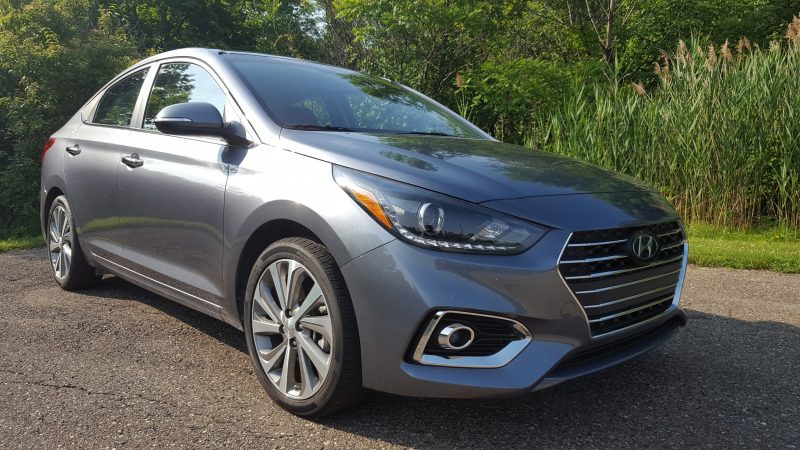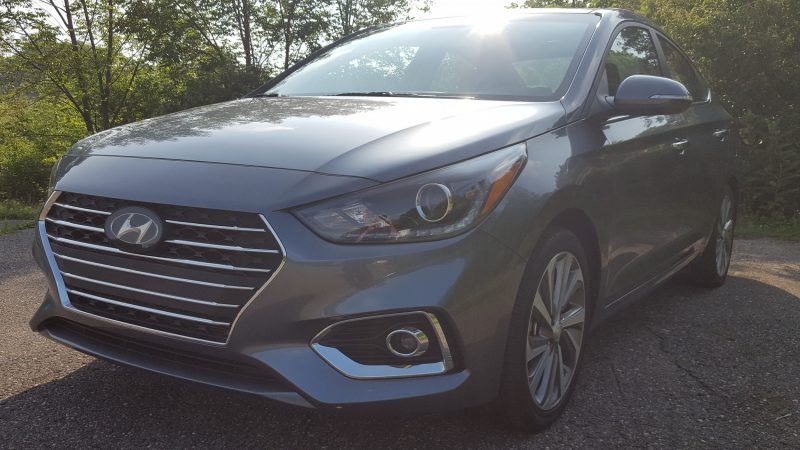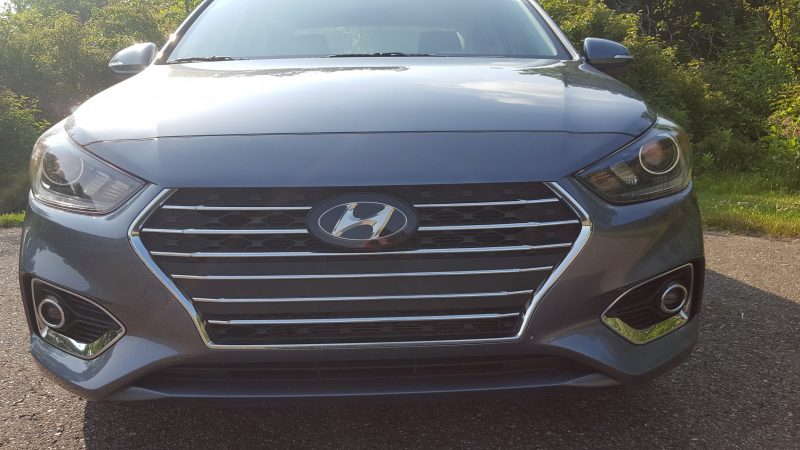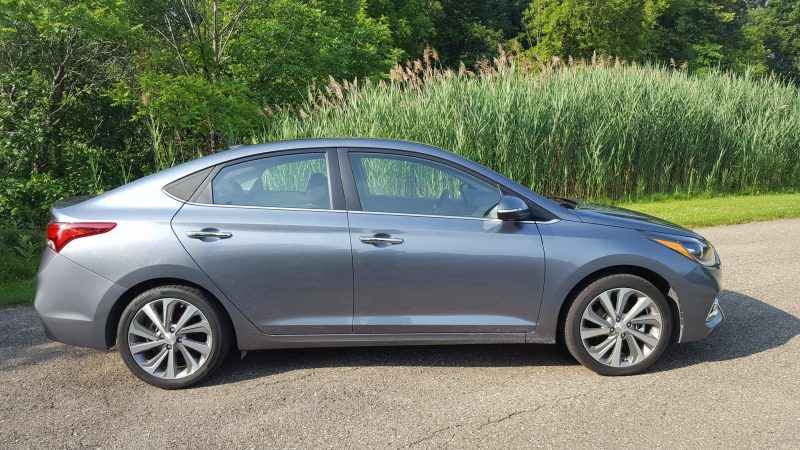Like two sides of a coin, the 2018 Kia Rio and the 2018 Hyundai Accent have very important roles to play for their respective brands.
Both offer an affordable gateway to their respective lineups, they are small, and each also offer their buyers a unique experience that drives home the mission of their respective identities.
When we last spent time in the 2018 Kia Rio, we loved the Rio’s spunk and its value oriented pricing. Can the same magic apply to its more upscale corporate sibling, the Hyundai Accent? Or is it still overshadowed by the popular Elantra?
Wheras the exterior styling of the Rio is catered towards excitement and promoting Kia’s wild side, the Accent is a more elegant affair. It’s part of a complete overhaul for 2018, which sees the Accent ride on an all new platform that comes jam packed with technology (more on that later.) The exterior styling is more refined than before, and it incorporates Hyundai’s latest design language. The look is very reminiscent of the Elantra’s, and from some angles, the Accent can do a pretty good impression of one. It also does not look like a bar of soap, or a bland canvas like its predecessor, which is good news for those that clamored for more stylish duds from their Accent purchase.
Sadly, the Accent hatchback will not be offered for 2018, with Hyundai citing higher sales figures for the sedan as the sole reason for its omission for the 2018 model year.
Normally, we would be offended with such an omission, but in this case, hatch enthusiasts can step into the Elantra GT for their five-door related needs.
The interior of the Accent proved to be an unexpected surprise, with this author and passengers thinking we slipped behind the wheel of a far more expensive car. Hyundai designers wanted to try and give occupants maximum value for their dollar. While it is not a gleaming technological masterpiece that is commonly seen in more luxurious offerings, the Accent is a nice step up over some of the rental car spec interiors that still populate the segment as a whole.
Plastic quality is good, though there were still some chintzy bits in select sections of the cabin.
The seats in our tester were very comfortable, and there is more interior room to stretch out and relax. To find out just how accommodating the Accent was on long journeys, we enlisted its services to haul my fiancee Emily, her mother, and two of their friends to a wedding in the upper reaches of Metro Detroit.
A limo it isn’t, but the Accent still did a good job handling the full passenger load. Headroom in the back is tight for rear passengers, but our brave volunteers did appreciate the decent amounts of rear legroom that were present.
Technology and features were given high priority this time around, and the Accent comes equipped with a standard rear view camera, a 5.0-inch touchscreen infotainment system, and standard Bluetooth.
SEL and Limited models like our test car upgrade to a bigger 7.0-inch infotainment system that comes equipped with Apple CarPlay, and Android Auto capability. Limited spec cars up the ante slightly, and feature heated front seats, automatic emergency braking, and a gimmicky but cool smart trunk that automatically opens when you stand behind the Accent with the key fob in your pocket.
Performance for our tester comes from a revised 1.6 liter four cylinder that is good for a modest 130 horsepower, and an equally competent 119 lb-ft of torque.
This is roughly in line with segment rivals, and the Accent can be equipped with a six speed manual. The catch is that these buyers will be limited to the base SE trim, with Hyundai expecting about 5 percent of buyers to opt for this combination. Horsepower is down for this generation, but Hyundai claims that the sacrifice in output is certainly worth it, especially in regards to mid-range response, enhanced fuel economy, and more low end torque.
We noticed these improvements when we had the chance to take our Limited grade tester out on the road. Our car featured the six speed automatic, and it did a good job conducting its business in a smooth and refined manner, with shifts being crisp and smooth. Put the hammer down, and the transmission immediately downshifts to put you back into the engine’s sweet spot.
Sport mode further enhances this spirited presentation. However, pretend that manual mode is a figment of your imagination, since it is clunky, unresponsive, and slow (we have heard segments of C-SPAN that were quicker.)
Handling in our tester also impressed us when we encountered some twistier sections of tarmac.
The Accent is still not the defining authority when it comes to being a proper sport sedan, but the well tuned chassis helped deliver a secure ride, while better body control helps reduce unwanted body roll. Our tester was equipped with Hyundai’s Torque Vectoring Control, which applies the brakes on the inside wheel slightly to help neutralize understeer.
The steering itself is well weighted, but we would like more feedback to help us better understand what the front wheels are doing in relation to the road. Revised rear shock absorbers help enhance ride quality and comfort, but they cannot fully mitigate the rear end bounciness that’s generated by the torsion beam rear suspension layout over rougher sections of pavement.
With all these features and enhancements, the 2018 Hyundai Accent is an example of just how far the economy car segment has come. Once regarded as cheap plastic filled penalty boxes that forced buyers to sacrifice amenities to achieve a rock bottom price, this new crop of offerings now offers buyers a compelling suite of safety and driving features to balance their value oriented pricing.
Speaking of pricing, buyers will be pleased to know that value is still an Accent hallmark. Pricing for 2019 models (our tester was a late 2018 model) starts at $14,995 for the base SE model, which brings standard Bluetooth, tilt steering wheel, and the fore-mentioned six-speed manual transmission to its list of tricks.
Meanwhile the volume focused SEL starts at $17,345 and brings goodies such as dual USB charging ports, 15-inch dual alloy wheels, rear disc brakes, 7.o inch touchscreen infotainment system, and automatic headlight control.
Look for this trim to truly take the fight to rivals such as the Honda Fit, Nissan Versa, and even the outgoing Ford Fiesta.
Lastly, Limited models like our car start at $19,080 and this trim doubles down on equipment for buyers. Forward Collision Warning is standard issue as is heated seats, push button start with smart key, 17-inch alloy wheels, and LED head and taillights.
With a new suit of clothes that allows it to be more expressive, as well as a comprehensive suite of equipment to allow it to be on par with rivals, the 2018 Hyundai Accent is a noticeable improvement over its budget minded ancestors.
While the loss of the hatchback variant will be felt by some budget buyers looking for more practicality, Hyundai reckons that the fore-mentioned improvements, as well as its impressive long term warranty will allow the Accent to take a bigger slice of the broader sales pie, especially as CUVS assert their dominance in the automotive marketplace.

Carl Malek has been an automotive journalist for over 10 years. First starting out as a freelance photographer before making the transition to writing during college, his work has appeared on numerous automotive forums as well as websites such as Autoshopper.com.
Carl is also a big fan of British vehicles with the bulk of his devotion going to the Morgan Motor Company as well as offerings from Lotus, MG, and Caterham. When he is not writing about automobiles, Carl enjoys spending time with his family and friends in the Metro Detroit area, as well as spending time with his adorable pets.

